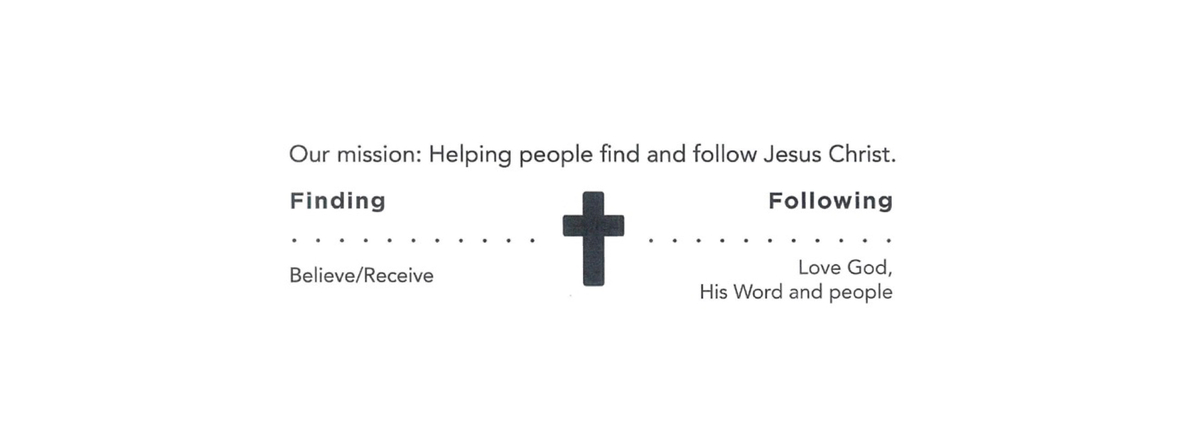XPastor tries to help churches by providing some of the essentials for running a church—items like job descriptions, employment applications, review forms and policies. Below is the Nursery Procedures of Northwest Bible Church in Dallas, Texas.
Introductory Note
Welcome to the Nursery at Northwest Bible Church. I hope this booklet is informative and answers your questions about the procedures of the Nursery. Contained herein are the most current procedures that go with the Nursery. You will find information ranging from diaper changing to accepting youth helpers and what to do with an inconsolable child. There is also information on what to expect when you volunteer for the Nursery. If you have any questions or have any comments concerning what is here, please let me know. I am always looking for suggestions!
Vision
To provide a safe, secure and clean environment where parents are comfortable leaving their children while they worship God. Teachers will be rocking babies, playing with the crawlers, chasing after the toddlers and sharing God’s love. The nursery will be the beginning of a strong foundation of faith in Jesus Christ and a time when seeds of faith can be planted and nurtured.
Goals
- Provide a safe and secure environment for parents and visitors of the church to drop off their children.
- Provide a sanitary environment where the parents are not afraid to drop off their children because they may get sick.
- Provide age appropriate curriculum for the classrooms to introduce God’s love, the story telling setting and the basic fundamentals of the Christian faith.
- Prayer support for the volunteers and their families and the children and their families.
- Closer fellowship with the monthly volunteers.
- Improve communication with the parents of the children, including the visitors.
- Keep our Nursery as up-to-date as possible.
- Train and set up an organized system for junior helpers, including Jr. High and High School helpers.
Nursery Volunteer Ministry Description
Objectives
A Nursery Volunteer can play a significant role in the spiritual development of a child. Statistics show that 85-90% of the Christians in the world trust Christ between the ages of four and fourteen. Therefore, we take ministry to children very seriously and believe that you should as well. Specifically, our objectives for the Nursery are as follows:
- To provide a secure, loving and nurturing environment for the children.
- To provide parents with the assurance that their children will be cared for lovingly and safely in their absence.
- To introduce each child to the love of God through positive role modeling.
- To pray for each child to come into a personal relationship with Jesus Christ.
Relationships
The Nursery Volunteer reports directly to and is under the direct supervision of the Team Leader of the Nursery Class to which he/she is assigned. The Team Leaders and any Nursery Volunteers not under a Team Leader report directly to the Sunday Morning Nursery Director.
Nursery Teacher Specific Responsibilities
- Arrive in the Nursery by 9:00 a.m., Sunday morning or 6:15 p.m., Saturday night. Be present or provide a substitute for his/her assigned Sunday or Saturday except in the event of illness or emergencies.
- If a couple is serving, then two substitutes will be necessary. If a spouse or child is ill, the non-ill spouse should be serving.
- Spend sufficient time in prayer for his/her charges and their parents.
- Notify the Team Leader/Nursery Director when a substitute will serve.
- Notify the Team Leader/Nursery Director ahead of time in case of absence due to emergency or illness and ensure that a replacement teacher is found.
- Attend Training Programs at the beginning of the Sunday School year, as well as any on-going training programs given throughout the year.
- Agree to serve for at least one Sunday School year or the remainder of the year in the event of a mid-term volunteer.
Nursery Teacher Qualifications
- Born-again Christian with a Christ honoring lifestyle.
- View Children’s Ministry as a vital ministry of the church and have the desire to reach children for Jesus Christ as well as assist in their spiritual development.
- Be a regular attender of Northwest Bible Church of at least six months.
- Has a completed volunteer application on file and has had a personal interview.
Conflict Resolution
As people reconciled to God by the death and resurrection of Jesus Christ, we believe that we are called to respond to conflict in a way that is remarkably different from the way the world deals with conflict (Luke 6:27-36; Gal. 5:19-26; Matt. 5:9). We also believe that conflict provides opportunities to glorify God, serve other people, and grow to be like Christ (1 Cor. 10:31-11:1; Rom. 8:28-29; James 1:2-4).
All nursery volunteers agree to the following concerning any conflicts that may arise between themselves, parents or leadership.
The parties to this agreement are Christians and believe that the Bible commands them to make every effort to live at peace and to resolve disputes with each other in private or within the Christian church (Matt. 18:15-20; 1 Cor. 6:1-8). Therefore, the parties agree that any claim or dispute arising from or related to this agreement shall be settled by biblically-based mediation and, if necessary, legally binding arbitration in accordance with the Rules of Procedure for Christian Conciliation of the Institute for Christian Conciliation, a division of Peacemaker® Ministries (complete text of the Rules is available at www.Hispeace.org). Judgment upon an arbitration decision may be entered in any court otherwise having jurisdiction. The parties understand that these methods shall be the sole remedy for any controversy or claim arising out of this agreement and expressly waive their right to file a lawsuit in any civil court against one another for such disputes, except to enforce an arbitration decision.
Nursery Guidelines
Safe
- There must be a minimum of two workers per room. If you are the only worker who has arrived, do not accept children until another adult is present with you. This is to protect you, as well as the children. The ratio of children to adults must not exceed 8-1 in the oldest Nursery rooms and 3-1 in the newborn room. A lower ratio is preferable. The younger the child the lower the ratio. If the ratio reaches an unacceptable amount, no more children can be taken until more teachers are located and in the room.
- Bye-Bye Buggies can be used when the ratio is getting close to 8-1. But they can also be used as a fun break for the children and workers.
- Make certain that the child’s name and room number is on his/her back before taking them out in the buggy.
- Note the time the buggy leaves just in case a parent arrives early to pick up their child.
- Strollers and Bye-Bye Buggies may be strolled throughout the Early Childhood and Worship Building. However, do not take the children, buggies or strollers outside.
6. Children must be supervised on the in-room play equipment. Volunteers can switch off “playground” duty throughout the morning. Remember, one bad fall could seriously injure a child.
Secure
- Each child must be checked in and out of the room using the purple security card and/or photo ID card.
- Use tape to mark the cups and bags of each child as they are checked in.
- Make sure that parents write where they will be during both services so that we can locate them easily if we need to.
- Ask parents about any special needs or allergies that the child may have.
- Children may not be released to parents from strollers (even with a security card).
- Children must be released using the security cards from the door. Parents are not to come into the room as it causes confusion for the other children.
- As children are released, mark their name off the roll.
- Have parents initial their child’s name as they take the child.
- Maintain a count of children so that you remain aware of the location of all children under your supervision.
- Do not release children if the adult does not have a purple security card, even if you know the adult. Always get the Nursery Director to take responsibility for the release of the child.
- At least two teachers should be with children at all times, especially during diaper changes.
- There are Visitor Sign-In cards and yellow Nursery Registration cards in each room.
- Visitors are to fill out the Visitor Sign-In card. This is not a registration. Additional information will be sent to the family only if they desire it. A “thank you” for attending postcard will be mailed to the child.
- New families who wish to have their child on the permanent roster need to fill out the yellow Nursery Registration card.
Silent Nursery Pager Procedures for Parents
- The Silent Nursery Pagers are provided as a safety measure for your children.
- Before you leave, make sure the correct pager number is written next to your child’s name.
- Clip the pager to yourself where you will feel it vibrate if it goes off.
- Do not put it inside a purse or clip it where you will not be able to feel it vibrate.
- You are responsible for the pager. Take care of it!
- By accepting the pager, you agree to take responsibility of the pager while it is in your possession. You will be responsible for any damage to the pager or the loss of it. The replacement cost of the pager is $69.
Silent Nursery Pager Procedures for Volunteers
- The Silent Nursery Pagers are provided as a safety measure for the children.
- Make sure the correct pager number is written next to the child’s name.
- Remind the parent to clip the pager to his/herself where they will feel it vibrate if it goes off.
- Remind them not to put it inside a purse or clip it where they will not be able to feel it vibrate.
- Remember to ask for the pager back from the parent you assign it to. Mark it off the list.
- If the parent returns and says the pager is lost or damaged, contact the Nursery Director immediately!
Sanitary
- Enforce the Ill Child Attendance Guidelines posted at each room.
- Cloudy or colored runny nose—this includes yellow and green discharge.
- Cough due to contagious condition.
- Pus-like discharge from eyes or nose due to contagious condition.
- Temperature over 100 oral, 101 rectal.
- Pink eye.
- Vomiting.
- Diarrhea.
- Lethargic behavior.
- Any known infectious/contagious childhood disease.
- Any rash diagnosed as contagious by a physician.
- Hand washing should be done upon arrival in the morning, before and after diaper changes, using the toilet and before food handling. Hand washing is also recommended throughout the morning.
- Diaper changing
- Use a new pair of gloves to change each child’s diaper.
- Wipe down changing table with disinfectant after each change.
- Place soiled diapers in a plastic bag, knot it, then place it in the diaper pail.
- Wet diapers can be folded into a package using tape tabs on diaper and placed directly in the diaper pail.
- Remember to wash your hands!
- Remember to empty diaper pail and trash receptacle into large trash cans in the hall at the end of the day.
- First Aid
- Should be rendered using gloves.
- Only minor injuries should be treated.
- First aid kits are located in the cabinets over the sink in our coffee area.
- Wash hands with soap thoroughly, even if gloves were used.
- Linens
- Only put children down on fresh bed linens.
- Use fresh burp cloths with each child.
- All linens are taken to laundry room at the end of the day—the laundry room is located across from the Puppet room in the Preschool hallway, next to the Resource Room.
Sick Children
We cannot accept children who are sick. Parents should be notified immediately if a child becomes sick, is dropped, falls or has a serious accident. If you suspect a child is not well, their parents should be notified. Please be sensitive to our parents. Sometimes they do not realize their children are sick. We cannot give medication. If a child is on medication, they should not be in the Nursery.
If a child is vomiting, the child must be removed from the classroom and not allowed to go back in. An excuse of eating too much, excitement, being upset or nerves may not be accepted. The parents are to be reached and the child removed from the others.
Inconsolable Children
Sometimes there are situations where a child is not consolable. If a child cries non-stop for 15-20 minutes, the parents are to be notified. Prolonged screaming/harsh crying is not healthy for young children, nor for the environment in the classroom. Of course, try to comfort the child as much as possible. There are many things to try to help console a child. Holding, rocking, one-on-one attention, strolling, etc.
Ouch!
If a child is injured, please write a brief description of what happened. There will be “Ouch” report forms in the classrooms. They are located in the back of the security card boxes. Please give completed form to the Nursery Director. A copy will be made to give to the parents.
“Ouch” Report:
Date: _______________________________
Time: _______________________________
Dear: ________________________________ (Parent’s Name) _____________________________________(Child’s Name)
cried “Ouch.” This is what happened:_____________________________________
Here is how we treated it: _____________________________________
Sincerely,
_____________________________________ (Teacher’s Name)
If you have any questions, please contact Tina Longest at tlongest@nbctexas.org or at 214-368-7092, ext. 132.
Biting
The facts about biting:
- Biting is normal in babies and toddlers. It is not pleasant but normal and will stop in time.
- Young children bite for several reasons:
- Their language is limited.
- They are teething and are very conscious of their mouths.
- Biting gets immediate and obvious reactions from the victim and adults.
- It is very difficult to prevent as it happens quickly and often for no discernible reason.
- It is one of the few times the child, not the adult, has the power.
- Children who bite are not “mean” and it will not help for them to be labeled as “bad,” “mean” or “a biter”—children generally live up to the expectations of the adults or children around them.
- Biting seems to go in spurts.
- Biting is most prevalent between the ages of 15-30 months although it can happen at a younger age or with older preschoolers. This is due to the age of the children and their stage of development, nothing else.
- Unless the skin is broken, the wound, although sometimes ugly, will bruise and fade away and is not a matter for medical concern. Always give the bitten child lots of comfort.
What do we do when a child bites?
- We remove the child away from other children and comfort the hurt child. We tell the biter very firmly “No biting! Biting hurts.” We inform the parent of the injured child as well as the parent of the child who bites at the end of the morning and fill out an “Ouch” report. Kindness, compassion and reassurance are appreciated by all parents.
- We will immediately notify the parents of the bitten child if there is a deep wound, bleeding or if the child is traumatized and cannot be comforted.
- If a child has bitten someone and still shows aggressive behavior after the time out, the parents must come and retrieve the child.
What do we do to protect the children when consistent biting occurs?
- First offense: Warning to the parents that their child has been caught biting another child. Gently ask the parents to monitor their child during the week to observe his/her behavior. The parent will also receive a copy of this policy.
- Second offense: The child who is biting is immediately taken from the classroom for the rest of the morning and the parents are called to come and get him/her.
- Third offense: The child is taken off the roster until the parents and the Nursery Director come to an understanding that their child will no longer pose any threat to the other children.
What can parents do to help?
- Understand that biting is normal at certain ages (although unpleasant!)
- Believe that we are doing all we know to help the children (biters and bitees) through the situation.
- Do not ask who is doing the biting or, if you know who is, do not talk about the child in front of your child or others.
- Never blame or confront the parents of a biting child. They would do anything (short of tooth extraction) to stop the behavior. In fact, they are frequently more distressed than the parents of a bitten child.
- With your own child avoid “nibbling” or pretending to bite.
- Come to us with any suggestions you may have; we always welcome new ideas.
Youth Helpers (Spotlight 456/Jr. High/High School Students)
Here are some guidelines to follow regarding our faithful youth helpers.
- Before a youth helper is allowed to help in a Nursery classroom, make sure that the Nursery Director is informed. The Nursery Director will be in the Nursery hallway through the second hour transition to make sure the classrooms are staffed and the ratios of teachers to children remains acceptable. Please do not accept help from anyone unless approved by the Nursery Director. If the Nursery Director is not in the hallway and a youth worker wants to help, they should not be allowed in the classroom.
- Youth helpers need to be briefed on all policies and procedures.
- Youth helpers must be with an adult at all times. They are not allowed to:
- Stroll children without an adult.
- Take children outside the classroom without an adult present.
- Be in the classroom alone with the children. There must be an adult.
- Youth helpers may be given the option of helping with a craft project and presenting it to the children. This applies only to the oldest classroom.
- Encourage the helpers to interact with the children and play. If there is more than one helper (rare occasions) help them stay focused.
- Encourage the helpers to actually help. This includes cleaning up cracker crumbs, getting toys out for play, putting away toys and diaper changes. Remember, they are there to help.
- Make sure the youth helpers sign in on the teacher sign-in sheet.
Infants/Newborns (0-6 months), Babies (7-9 months), Crawlers (10-13 months) Nursery Room Schedule
- Prepare Room
- Tape (for labeling child’s back, bag and cup).
- Attendance box and pens.
- Attendance sheet.
- Take toys out of closet or off shelves.
- Check-in: 9:00-9:30 a.m.
- One person greets to check child in.
- One person leads distracting play to draw children away from departing parent (blow bubbles, roll balls, slide, duck-duck-goose).
- Two people focus on children having a rough time leaving mom or dad.
- This is a flexible time so be flexible on everything but the check-in procedure.
- Curriculum lesson: 10:00-10:30 a.m.
- Age appropriate messages for each classroom.
- Diaper changes: 10:15 a.m.
- Use fresh gloves for each change.
- Clean mat with cleaner provided after each change.
- Place dirty diapers in plastic bag provided, knot and place in diaper pail.
- Two teachers minimum should be present during diaper changes.
- Check and note time by child’s name
- Playtime
- Allow the children to enjoy themselves.
- Use strollers.
- Play simple games, i.c. roll the ball.
- Second check-in: 10:30-11:00 a.m.
- Have all strollers back at this time as parents may have changed plans.
- Do your best to distract children from the door, just in case their parent wants to peek in without disturbing the child.
- Diaper changes: 11:45 a.m.
- Clean-up time: 11:55 a.m.
- Encourage children to help.
- Make it a game.
- Check-out
- Greet parents again and say positive things about their child.
- Return child only to parent or person on Photo ID and retrieve any security card.
- Have parent initial near child’s name on check-in form.
- Follow End-of-Day Checklist procedures posted in each room.
“Toddlers” (14-18 months) and “Walkers” (19-23 months) Nursery Room Schedule
- Prepare Room
- Tape (for labeling child’s back, bag and cup).
- Attendance box and pens.
- Attendance sheet.
- Take toys out of closet or off shelves.
- Check-in: 9:00-9:30 a.m.
- One person greets to check child in.
- One person leads distracting play (blow bubbles, roll balls, slide, duck-duck-goose).
- Two people focus on crying children.
- This is a flexible time so be flexible on everything but the check-in procedure
- Curriculum lesson: 10:00-10:30 a.m.
- Age appropriate messages for each classroom.
- Diaper changes: 10:15 a.m.
- Use fresh gloves for each change.
- Clean mat with cleaner provided after each change.
- Place dirty diapers in plastic bag provided, knot and place in diaper pail.
- Two teachers should be present—always.
- Check and note time by child’s name.
- Playtime
- Allow the children to enjoy themselves.
- Use strollers.
- Play simple games, i.e. roll the ball.
- Second check-in: 10:30-11:00 a.m.
- Have all strollers back at this time as parents may have changed plans.
- Do your best to distract children from the door just in case their parent wants to peek in without disturbing the child.
- Snack time: 11:15 a.m.
- One cracker at a time! (check card for any parent comments)
- Try to keep carpet as clean as possible.
- Diaper changes: 11:45 a.m.
- Clean-up time: 11:55 a.m.
- Encourage children to help.
- Make it a game.
- Check-out
- Greet parents, say positive things about their child.
- Return child only to parent or person on Photo ID and retrieve any security card.
- Have parent initial near child’s name on check-in form.
- Follow End-of-Day Checklist procedures posted in each room.
“Runners” (24-35 months) Nursery Room Schedule
- Prepare Room
- Tape (for labeling child’s back, bag and cup).
- Attendance box and pens.
- Attendance sheet.
- Take toys out of closet or off shelves.
- Check-in: 9:00-9:30 a.m.
- One person greets to check child in.
- One person leads distracting play to draw children away from departing parent (blow bubbles, roll balls, play on slide, book, duck-duck-goose).
- Two people focus on children having a rough time leaving mom or dad.
- This is a flexible time so be flexible on everything but the check-in procedure.
- Bible story or message: 9:35 a.m.
- Simple story and song
- Invite children to sit with you on the floor for a story.
- Diaper changes: 10:15 a.m.
- Use fresh gloves for each change.
- Clean mat with cleaner provided after each change.
- Place dirty diapers in plastic bag provided, knot and place in diaper pail.
- Two teachers minimum should be present during diaper changes.
- Check and note time by child’s name on check-in form.
- Playtime
- Allow the children to enjoy themselves.
- Use strollers
- Play simple games
- Second check-in: 10:30-11:00 a.m.
- Have all strollers back at this time as parents may have changed plans.
- Do your best to distract children from the door just in case their parent wants to peek in without disturbing the child.
- Snack time: 11:15 a.m.
- One cracker at a time! (check card for any parent comments)
- Try to keep carpet as clean as possible.
- Diaper changes: 11:45 a.m.
- Clean-up time: 11:55 a.m.
- Encourage children to help
- Make it a game
- Check-out
- Greet parents again and say positive things about their child.
- Return child only to parent or person on Photo ID and retrieve any security card.
- Have parent initial near child’s name.
- Follow End-of-Day Checklist procedures posted in each room
End-of-Day Checklist
- Clean counters, tables and chairs.
- Wipe down used large toys.
- Wash any teething or soiled toys—leave to air dry on counter or in sink.
- Clean rug as much as possible.
- If there are spots on rug, please try to remove.
- Check supplies:
- Wipes
- Disinfectant bottle/spray
- Crackers
- Gloves
- Empty trash bin and diaper pail in room—put in large trash can at end of hall.
- Straighten room/closet/shelf.
- Remove sheets, blankets, burping cloths and take to laundry area for washing.
- Make sure you signed in this morning.
- Leave your name tag.
- Turn off light.
In the Event of a Fire
- Acquaint yourself with the evacuation route for your classroom. It is posted near the exit door of your classroom.
- Acquaint yourself with the evacuation route for adjoining classrooms should your primary exit be blocked and you need to evacuate through an adjoining classroom’s door.
- Before evacuating, count the number of children in your class. Take the attendance roster and any new registration cards or visitor cards with you.
- Evacuate to the area designated on your evacuation route chart. Upon arrival, take a head count to insure all your children are with you.
- Await further instructions from the Nursery Director or another NBC staff member.
- First-aid will be brought to you as needed. Do not leave your group to obtain first-aid.
- Remain calm, which will help keep your children calm. Keep them informed as you have information to share with them.
- Release children only to their parents and only after you have been given the okay to dismiss by the Nursery Director. Parents of nursery children must have their child’s security card (check photo ID if not available). Do not dismiss any children to go on their own.
The next page shows the evacuation routes for all the nursery classrooms. Everyone will meet on the grassy area on the west side of the nursery hallway. Wait there for further instructions. If the area becomes unsafe, instructions will be given on where to go. It is very important for everyone to remain in one location. The children’s safety depends on the adult volunteers remaining calm and available to get them to the safest place.
Tornado Safety
In case of this most severe weather condition, the map shows the evacuation routes and destinations for the Nursery hallway rooms.
- Rooms 105 and 106 move into Room 107.
- The Team Leader, or another worker in Room 107, must take the key on the heart-shaped key ring pinned to the inside bulletin board and close and lock into place the steel window shutter located on the outside of the room.
- Rooms 103 and 104 evacuate into the Nursing Mother’s room.
- Room 102 moves into the kitchen area. This will be a tight fit, but will work.
View the original PDF: Nursery Procedures











